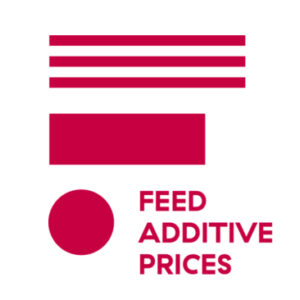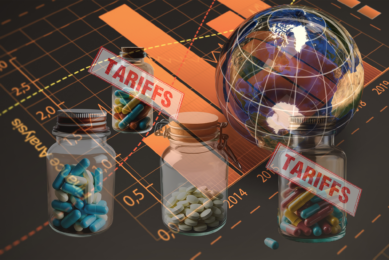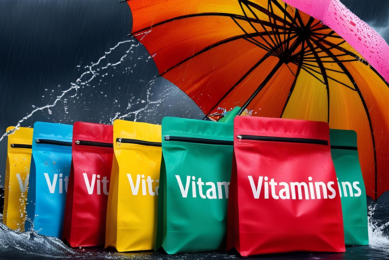Feed additives outlook: Q4 2024 and Q1 2025 – What’s in store?

2024 has been a turbulent year so far for amino acids and vitamins. Several significant disruptions in the container supply chain, production output issues, force majeure situations, and supply and demand imbalance leading to market and price volatility.
Hereby a market update with a bit more context around these specific events year to date, related to key amino acids and vitamins, but also a brief market outlook and future expectations.
Amino acids
Nowadays a significant part of the amino acids production is coming out of China. Products like lysine, threonine, methionine, tryptophan and valine are being shipped all over the globe out of China and efficient logistics has become a crucial part of this industry.
Until recently the market was driven by overcapacity, as a lot of new production output was initiated in China in the past few years. This ultimately led to very low prices for the main amino acids and the markets became pretty depressed. More recently there has been a focus on bringing more balance into the global supply and demand situation and prices started to become healthier going into 2024.
During the covid period we witnessed a first significant disruption in the container freight market, but also in 2024 there have already been 2 rounds of huge price increases and price decline on several major container trade lanes ex China. And as amino acids are relatively low priced products, the impact of freight on the end-price per ton is significant. So although FOB China prices themselves were not moving that much, the local prices in for example Europe have been moving strongly in some cases, purely due to freight price impact.
In the second and third quarter of 2024 the prices of lysine and threonine have been going up on average in most regions, as demand was good and availability in the local regions tight due to delays in transport ex China. At the same time the price for smaller amino acids such as valine and arginine came down due to new capacity in the market and a fight for market share.
At this moment the price of most amino acids is coming down again as new demand is behind and the container freight prices ex China are dropping rather quickly at the moment.
Vitamins
In line with amino acids, the vitamin market has been characterised by low prices due to heavy oversupply. For several years in a row the vitamin market has been depressed and hardly any volatility was seen, which is quite different from the pre-covid years.
But recently that has changed and several vitamins have started to increase in price. Wheather that will stick is still the question, but markets are moving and that trend is expected to continue.
First of all there are low stock levels seen in some of the main regions like the USA and Europe. For several years prices were low with product being readily available. But now with more and more delays seen out of China and longer lead times, stocks are being depleted and availability is being jeopardised. This has put pressure on the price.
Also, there has been a growing resistance from vitamin manufacturers against the very low price levels, no margin can be made. Although these manufacturers have placed all this new capacity on the market themselves, there is still a strong desire to come to more sustainable price levels.
And finally there have been a few major incidents at the manufacturer side which have led to strong price increases very recently on some key vitamins and that is ongoing on as we speak.
Currently some vitamins like vitamin B5, biotin, folic acid are still in that low price range with an oversupply situation. But others like vitamin E, A, D3 and B3 have been very firm lately and need to be watched going into Q4. Although some price relief is already seen on vitamin A and E, in a still tight market.
Logistics
As mentioned already briefly, the container supply chain ex China has been heavily disrupted this year and still is. Ever since the escalation in Israel and the attacks on commercial vessel on the Suez Canal route, most shipping lines are still sailing around Africa, increasing lead times and disrupting container allocations on a global basis.
Significant container capacity has been brought on the market and that led to low container prices early 2024. Shipping lines then started to increase prices, initiated blank sailings, took capacity out and delayed vessels and reduced container availability. This led to the first wave of price increases in Q1 2024, although relatively short-lived.
Price then came back down to low levels late Q1 / early Q2 2024. Around April/May a second wave of price increases started. Again, container availability in China was poor and shipments were delayed and lead times increased to export regions. At this moment prices are coming down rapidly again, but the same market conditions as mentioned above apply.
It seems that being a amino acids or vitamin market specialist is not enough anymore nowadays, you need to be a supply chain container specialist as well.
Geopolitics
The disruptions in the supply chain from China to other regions is clearly also geopolitically driven, with ships mostly not being able to go safely through the Suez Canal still.
But another form of geopolitics you could say, is the position of China versus for example the USA and Europe when it comes to market share of feed additives. Significant volume of production has either shifted or started in China and a big part of that is exported to other regions at competitive prices, pushing out traditional local manufacturers. Of course, there is a bit more dynamics around that but the fact is that Chinese product is now widely used all over the world.
This has led for example to the start of a lysine anti-dumping case of a European based amino acid manufacturer against China, via the EU authorities. This is all under investigation still, but it may change the lysine landscape in Europe considerably in case anti-dumping measures are indeed imposed, which is still unknown right now.
Sustainability
An increasingly important global subject, also around feed additives, is sustainability. End-users are looking into reducing the carbon footprint of the additives they use. What kind of raw materials are being used in production and where are they coming from. What about labour conditions and human rights in the supply chain. Packaging of feed additives, upcoming regulation, container vessels going around the world with relative cheap products, energy supply for production facilities, these are just a few topics that are more and more a part of the conversation between feed additive market participants. Another important field of expertise to take along while working with these kinds of products.
What does Q4 2024 and start Q1 2025 have in store for us?
There is no nearby solution for some of the geopolitical challenges it seems. That means for example that lead times ex China to export regions will stay longer compared to previous years and there is therefore an ongoing chance of supply chain disruptions from delayed vessels to too low stock levels.
There most likely will be no change in the desire of feed additive manufacturers to increase prices and margins.
No short term changes are seen in the demand of feed additives. So supply and demand balances should remain the same in the coming months.
The recent incident at a western vitamin manufacturer will still have impact into Q4 and potentially Q1, although right now the expectation from the market is that things will be more under control as we move forward.
Traditionally Q4 is busy in terms of shipments and planning ahead of the winter holidays and Chinese Newyear, that may temporarily stop the decline of container freight.
A lot of uncertainty around the outcome of the anti-dumping case for lysine in Europe and the impact on prices and the supply landscape going into 2025.
More specifically for feed additive prices; most amino acids seem to either start, or are already in, a period of price decline. Maybe not so much even on a FOB China basis, but more impacted by lower freight rates. Several vitamins remain sensitive for price increases but as a good portion of Q4 is already contracted, it may also become quiet and prices will remain stable or get a slight downward correction again.











